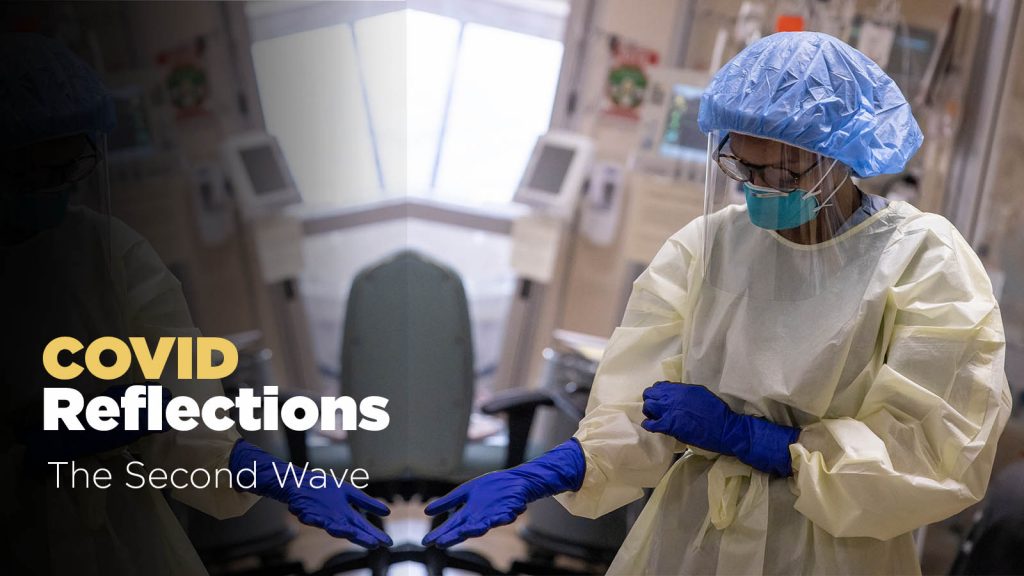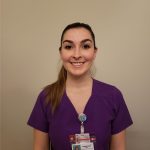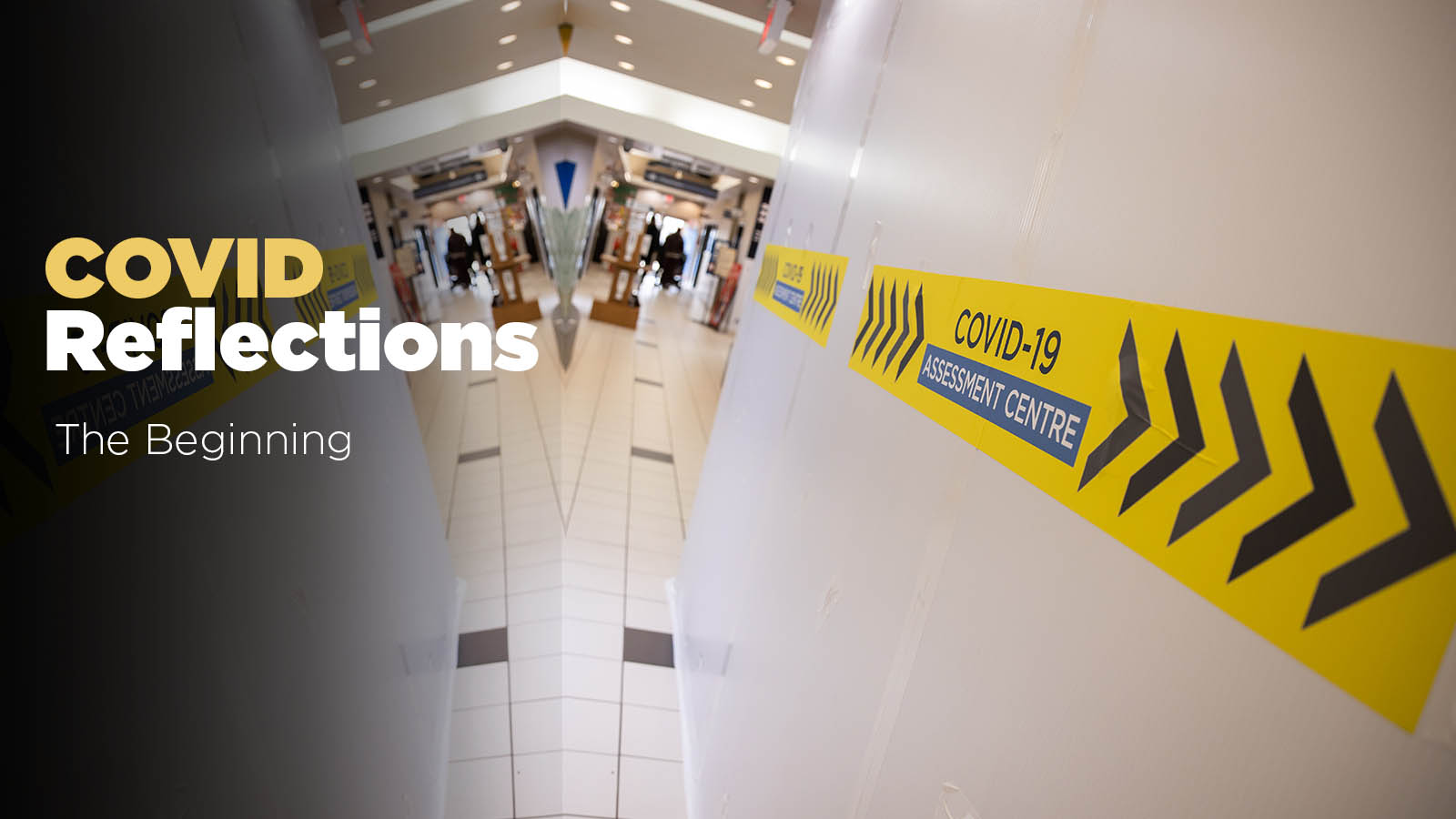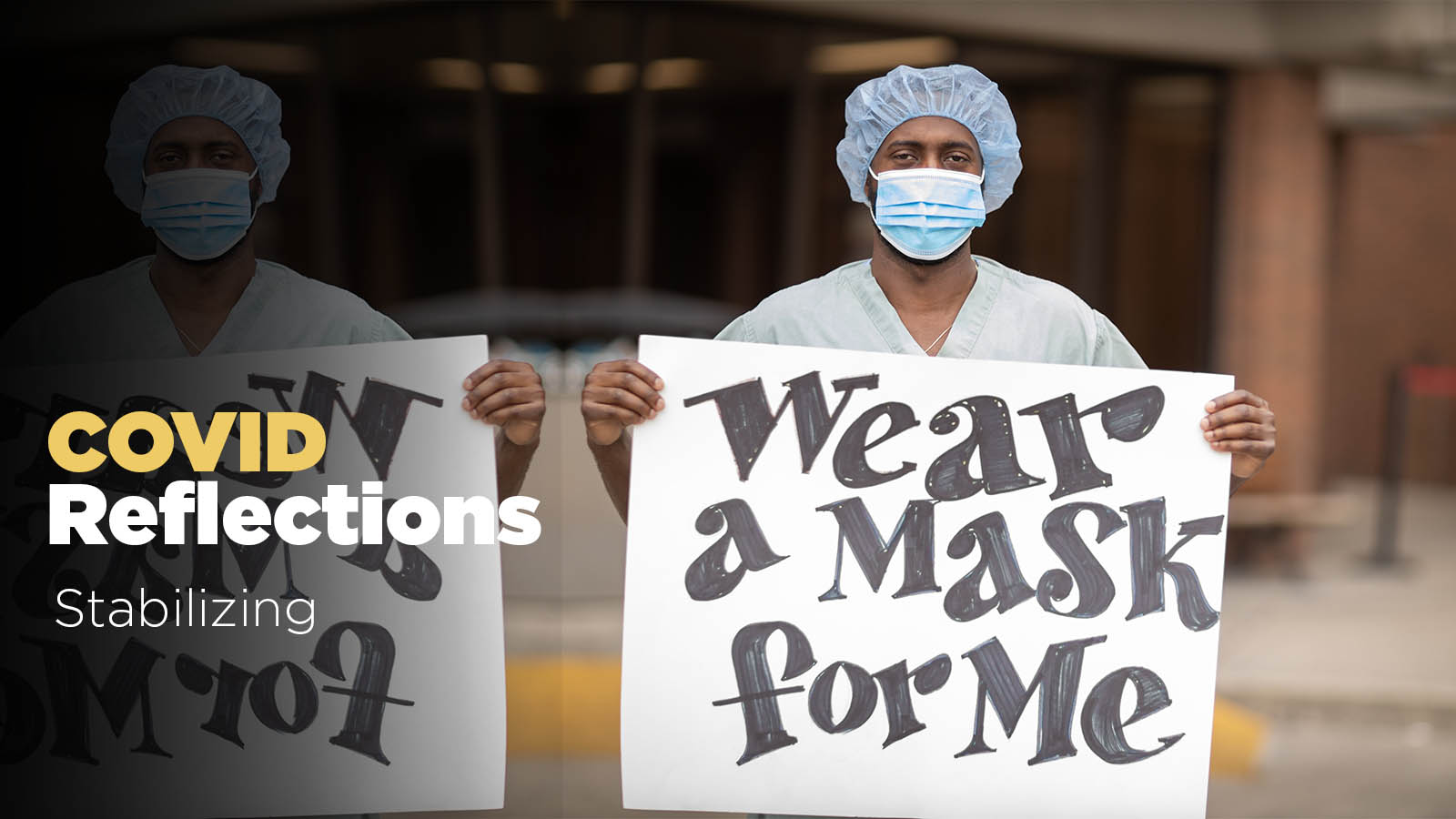
COVID Reflections: The second wave
March 11 marked the passage of one year since the World Health Organization declared a global pandemic for COVID-19. HHS is commemorating this time by acknowledging the heroic efforts and achievements of our workforce in response to this pandemic. We also recognize the challenges, loss and grief of this past year and extend our deepest condolences to those who have lost loved ones during this time.
These stories highlight milestones over the past year in our organization’s fight against the disease and for our community. This is chapter 3 of 4.
The second wave
Soon after the World Health Organization (WHO) declared a global pandemic on March 11, 2020, experts began warning of the likelihood of a ‘second wave’ of infections, disease and death.
In Hamilton, the impact of the second wave was not unlike other regions in Ontario, where the low infection rate sustained early in the pandemic and into the summer months began to rise steadily throughout the fall.
As case numbers began creeping up again in September, it was evident that the worst was yet to come. By mid-October, infections in Canada matched the highest point of the first wave and kept steadily climbing. Hamilton Health Sciences (HHS) took lessons learned from the spring to build a plan to reduce the risk associated with the rising numbers.
This included increasing COVID testing of patients already admitted to the hospital, as well as for patients scheduled to undergo surgical procedures or cancer therapy. Rather than implementing a general reduction in elective care, day-by-day, decisions were made to reduce scheduled care – mostly for elective surgeries – due to a lack of ICU beds.
These steps were taken not only to offer a safe environment for patients and staff, but also to preserve available frontline staff capacity, which was already stretched thin due to outbreaks, seasonal illness, and support for COVID care required elsewhere in our community. The hospital also tightened existing visiting restrictions and handed out compulsory medical-grade masks for anyone entering hospital sites.
As with other parts of the region, by December, the community started to see an increase of daily cases and a record number of hospital admissions that far surpassed the early stages of the pandemic. The number of COVID-positive patients at the Juravinski and General Hospital sites tripled in a matter of weeks. By mid-December, occupancy rates remained consistently at or above 105 per cent.
COVID teams mobilize in-hospital
In the COVID unit at Hamilton General Hospital, the team of physicians, nurses, respiratory therapists and others jumped into action. They had been down this road before.
“We are trained to take care of people who require various levels of intervention, but COVID has presented nuances that made this new territory for everyone,” says Dr. Mohamed Panju, chief of medicine at HGH. “By the time of the second wave, we had fine-tuned the way we manage this patient population.”
It’s an observation shared by Dr. Bram Rochwerg, site lead for critical care at the Juravinski Hospital.
“Our teams became experts in something that was very foreign to everyone in the first wave,” he says. “We learned a few important things after the first wave that helped us function like a well-oiled machine in the second wave.”
Rochwerg says that throughout the first wave and into the summer, the team learned a lot more about using personal protective equipment (PPE) to help keep each other safe. They also took part in various simulations, which included COVID cardiac arrests, protected intubations and investigating the complexities of transferring a COVID positive patient around the hospital.
In terms of medical interventions, Rochwerg says they relied on what they had learned in the first wave about the benefit of using steroids, which has now become a standard in patient care, in addition to how to time intubation for better patient outcomes, and optimize use of non-invasive oxygen support.
It takes a team approach
Along with lessons in patient treatments, Panju points to a commitment to co-leadership by physicians and administrators that helped with timely information flow. During the second wave, patient volumes changed quickly and teams need to adapt accordingly.
“We had really sick patients coming into the unit. We saw patients go from mildly sick to severely sick in a short period of time,” he says.
He says that in Hamilton, the creation of a remote home-monitoring program allowed doctors to send people home earlier, which freed up capacity to treat some of the sickest patients in hospital.
According to both Rochwerg and Panju, apart from the medical interventions, taking care of COVID patients has emphasized the benefit of a full team approach, including support from physicians, nurses, respiratory, physical and occupational therapists, pharmacists, and social workers.
“Working on a COVID unit can be exhausting for everyone, especially during outbreaks,” says Panju. “What unifies people is working toward a common goal – to help the patient get better. Seeing patients get well is very fulfilling.”
Both physicians say that there is a collective sense of pride that resonates throughout the teams as they work together with a focus on the safety of their patients and their colleagues.
There is also admiration.
“As physicians, we go in and out of the unit, but the nurses, respiratory therapists and allied health care and personal support workers are there constantly, facing significant challenges and change,” says Rochwerg. “You feel incredibly proud of them because throughout the pandemic, they have been able to evolve and make what they do, particularly wearing PPE, part of their day.”
Satellite Health Facility opens
As cases within the community continued to climb, HHS and St. Joseph’s Healthcare Hamilton (SJHH) worked together to transform the former Crowne Plaza Hotel in downtown Hamilton into a temporary Satellite Health Facility (SHF) aimed at maximizing bed capacity at hospital sites in the in the event of a surge of COVID-19 cases. As an extension of both hospitals, multidisciplinary teams of healthcare providers and primary care physicians provide care for patients.
The 150-bed facility (HHS has 90 beds; SJHH has 60) continues to support patients who do not require acute care. This includes patients destined for discharge, who require time to convalesce or who are waiting on availability of community supports, such as home care, long-term care or retirement homes.
“With the challenges and changes our community has faced during the pandemic, we’re privileged that our teams of nurses, physicians, allied health and managers can continue to bring their best skills to those who need it most, including those beyond our hospital’s walls,” said Kelly O’Halloran, director of community and population health. “The work has been intense, but our teams have shown incredible strength and resiliency to meet the challenges.”
Grace Villa long-term care home crisis
While HHS was innovating to provide new beds for older adults in our care, many HHS staff and physicians had volunteered to be redeployed at a number of facilities in the city including long-term care homes.
On November 28, Hamilton Public Health declared an outbreak at Grace Villa. Local media would refer to that outbreak as Hamilton’s “largest” and “deadliest” since the start of the pandemic. With many Grace Villa staff at all levels infected with the virus, the home was in crisis and needed extra support to care for the residents.
On December 16, HHS assumed temporary oversight of the home to help manage the outbreak, following a Ministry of Long-Term Care voluntary management agreement.
More than 50 HHS staff worked at Grace Villa. These included people on the Crisis Response Team – healthcare providers who pulled together earlier in the pandemic to respond to an outbreak at another local long-term care home, and staff from the Nursing Resource Team (NRT) who float between HHS sites to provide staffing support as needed.
Registered nurse Christine Toal was one of them.
Toal and her colleagues from the NRT experienced a mix of emotions when they arrived at the home. On one hand, their anxieties ran high with fear of the unknown; on the other, their compassion for the residents and staff propelled their resolve to do what they trained for and put their best skills to work to care for those in need. Some, including Toal, had never before worked in LTC.
“At first, it was challenging to learn what my role as an RN was, in addition to the home’s medication and documentation systems,” she says. “These are things a nurse needs to know before we can start providing care.
“Once I and my colleagues got into a rhythm, and started interacting more with the residents, we got to know them pretty well. And it was so hard to see people suffer, and see so many pass away.”
By late January, the home was no longer in outbreak. HHS staff began to integrate back to hospital sites, with the official transition back to Grace Villa staff complete on March 16.
Hospital outbreaks strain system
As teams were working hard to manage the Grace Villa outbreak, and provide support to several other long-term care, retirement homes and other congregate settings in the community, hospital sites were also beginning to see outbreaks among staff and patients.
On December 3, the first HHS hospital outbreak of the second wave was declared after two staff members and one patient tested positive for COVID-19 on the E3 medicine unit at the Juravinski Hospital. The unit was immediately closed to admissions and visitors, except for compassionate reasons.
“With an increase in community transmission, the risk for outbreaks in any settings increases, including hospitals,” says Dr. Dominik Mertz, HHS medical director of infection prevention and control (IPAC). “Breaches of infection prevention and control in hospitals are unlikely to result in outbreaks in a low epidemiology setting. This changes with higher epidemiology in the community because the risk for anyone entering our hospitals having unrecognized COVID increases.”
HHS implemented measures for managing and bringing the outbreaks under control including: PPE and hand hygiene audits and feedback, additional cleaning, limiting visitors, limiting staff and patient movements, grouping or transferring infected patients to a COVID unit, in addition to posting signage in the area and constant information sharing.
“Running a hospital at full capacity while managing outbreaks requires close collaboration between IPAC, employee health, hospital operations, and public health,” adds Mertz.
Throughout December and into 2021, staff and physicians grappled with more than 20 outbreaks across hospital sites, including the HHS floors of the Satellite Health Facility. As of March 17, a total of more than 260 patient cases and more than 215 staff and physician cases were associated with these outbreaks.
Taking care of our teams
As well as HHS staff and physicians providing clinical care in outbreaks, HHS’s employee health services continues to work at full capacity to support those individuals who got the virus.
Susan Fuciarelli, director of health, safety and wellness says, “In addition to timely staff testing for COVID-19, our employee health nurses have worked tirelessly to ensure we have a reliable system in place for symptom reporting, questions and concerns related to staff health, and to help staff return to work after they have recovered.
“Taking care of our teams is a top priority as we continue to work through the many challenges and changes with this virus.”
Due to the ongoing nature of the outbreaks on several units at the Juravinski Hospital, and the fact that many COVID-positive patients in the ICU mostly remained at the hospital due to complexities of managing their care, a designated COVID unit was created at the hospital. This meant that COVID patients did not need to be transferred to the COVID unit or ICU at Hamilton General Hospital, as the Juravinski was added to the list of regional hospitals providing care for COVID patients.
Looking forward
At the Juravinski Hospital, Rochwerg says that the staff fear of the unknown that was present during the first wave was alleviated during the second wave as people became more knowledgeable. Now, there is the added comfort that many healthcare providers have received their first vaccine.
“There’s more hope now that things are going to improve,” says Rochwerg. “In December, it was a whole other story. There were more reasons for people to get discouraged.”
Still, the silver lining of hope that vaccination brings comes with a degree of caution. Many healthcare providers worry about the continued risk of transmission as people let their guard down, particularly by not maintaining social distancing and masking.







